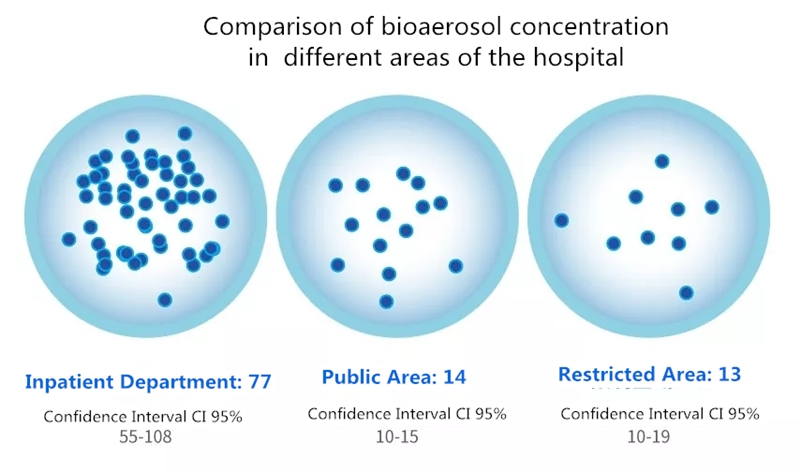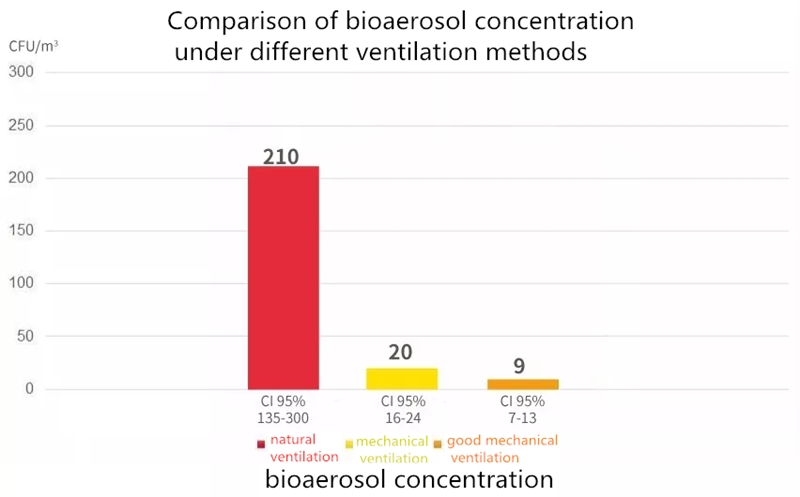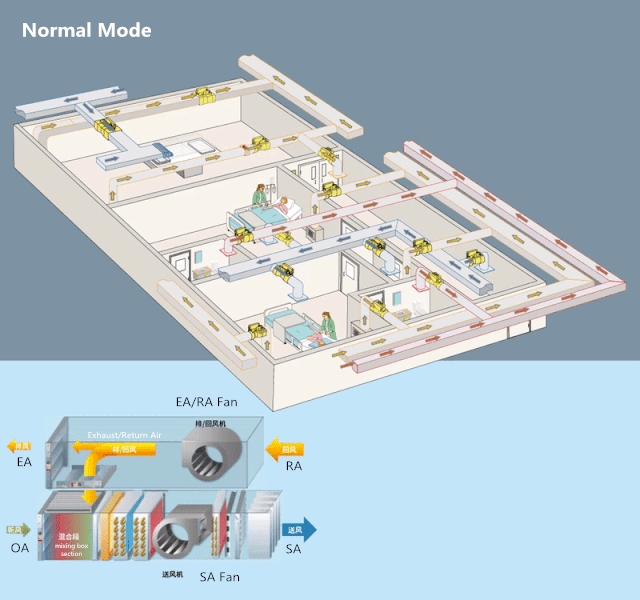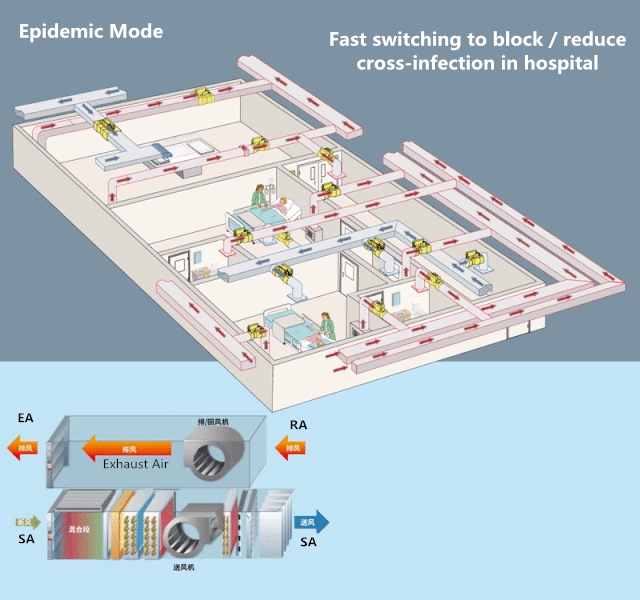The coronavirus can be spread via three ways, direct transmission (droplet), contact transmission, aerosol transmission. For the previous two ways, we could wear personal protective equipment, wash hands frequently, and disinfect surfaces to avoid being infected. However, as for the third type aerosol transmission, as it is directly related to hospital-acquired infections (HAIs), the concentration of aerosols in the hospital has attracted considerable attention.
Then, how can hospital facilities reduce cross-infection in the hospital for aerosol transmission? The general ward generally uses windows to provide natural ventilation, but the ventilation efficiency is relatively low; for the intensive care unit (ICU) which is the last guardian of life, there must be more effective and reasonable fresh air volume and ventilation times. Similarly, for highly infectious and highly lethal respiratory infectious diseases such as SARS, MERS, and new coronaviruses, effective dilution and elimination of biological aerosols is particularly important.
* In the case of natural ventilation, for example, ventilation is affected by changes of wind direction, temperature, and the external natural environment-for example, the haze itself is aerosol, and the dilution of the aerosol is not guaranteed, so totally new wind is required, which is no circulation no re-infected air conditioning system.
Now let’s take a look at a set of statistics published in the Healthcare Infection Society Journal



From the above data, we can see that in different areas of the hospital, the inpatient department has the highest concentration of bioaerosols, and in medical institutions that adopt natural ventilation, the concentration of microbial aerosols is nearly 30 times higher than those which use advanced mechanical ventilation systems. It can be seen that the use of advanced mechanical ventilation systems has a very good effect on reducing indoor aerosol concentrations and colony counts in hospitals, and plays a vital role in controlling hospital acquired infections (HAI).
When a large-scale epidemic outbreak (especially diseases such as influenza and pneumonia transmitted through the air route), the hospital will face the problems of a large increase in the number of consultations, lack of effective negative pressure and isolated ward and other problems, and need to respond quickly for response. In fact, if an appropriate air-conditioning system and fresh air system are used, the ordinary ward can be quickly switched to the infectious disease isolated ward mode to block / reduce cross-channel infection in the hospital. Nowadays, some advanced hospitals have begun to use such fresh air and air conditioning systems.


Effective negative pressure and the protection of biological safety cabinets are important for the protection of medical workers. The testing laboratory of the pathology department also need to have airflow protection measures, including audible and visual alarms for abnormal pressure, reminding medical staff and maintainer to maintain it.
In this special Spring Festival, medical workers interpreted the professional spirit with the most beautiful actions. Picture of Solitaire’s “combat”, silhouettes sleeping on the floor, scratched on the cheeks by masks, soaked in sweat on white hands … We are moved by their love, and we hope to provide them with the safest protection. Sincerely wish all medical workers return safely! Let us work together to fight the epidemic!
Post time: Apr-17-2020








